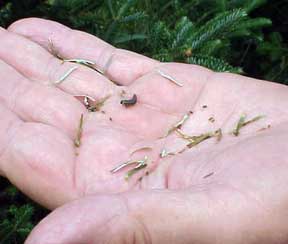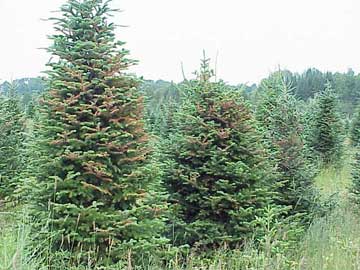Balsam fir sawfly
Editor’s note: This article is from the archives of the MSU Crop Advisory Team Alerts. Check the label of any pesticide referenced to ensure your use is included.
Balsam fir sawfly
The past few years in the northeastern portion of the Lower Peninsula we have seen severe defoliation from balsam fir sawfly. Growers and homeowners should begin to be on the look out for this sawfly.
The larvae of balsam fir sawfly are dark green with darker longitudinal stripes and head and when mature are about a half-inch long (photo 1). They feed on the previous year’s growth of its preferred species balsam fir but will also feed on Fraser fir and spruce. Typically, we don’t get calls until the tree starts showing reddening of the interior needles in July (photo 2). Part of the difficulty is that these tend to be in the crown of the tree and your may not able to see the larvae on larger trees. Treat infested trees as soon as you see the larvae. Make sure to get good coverage.



 Print
Print Email
Email




